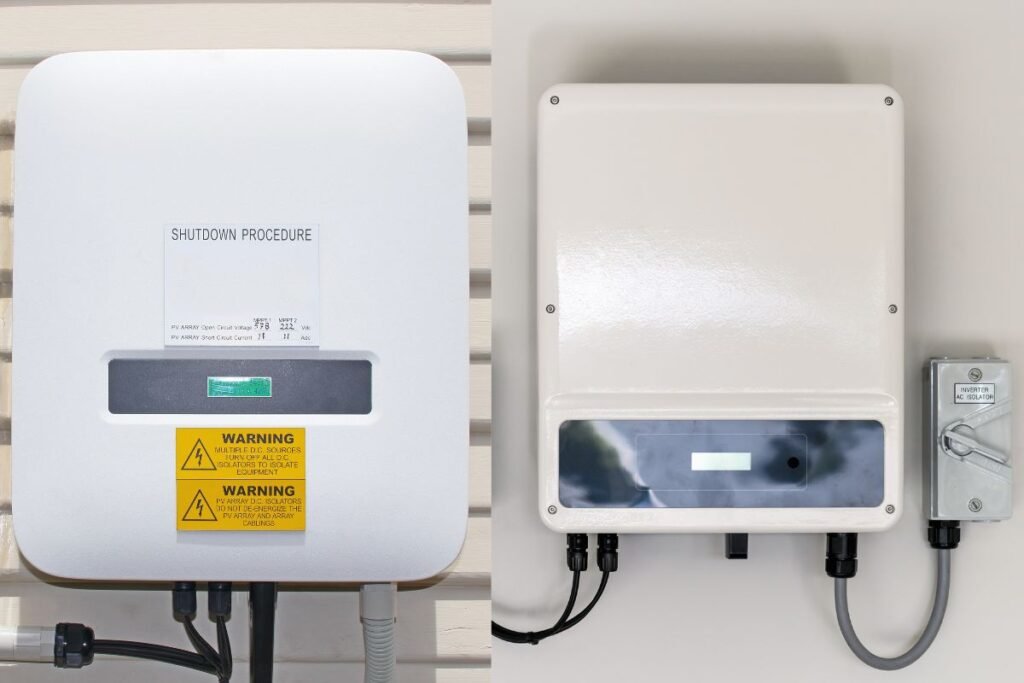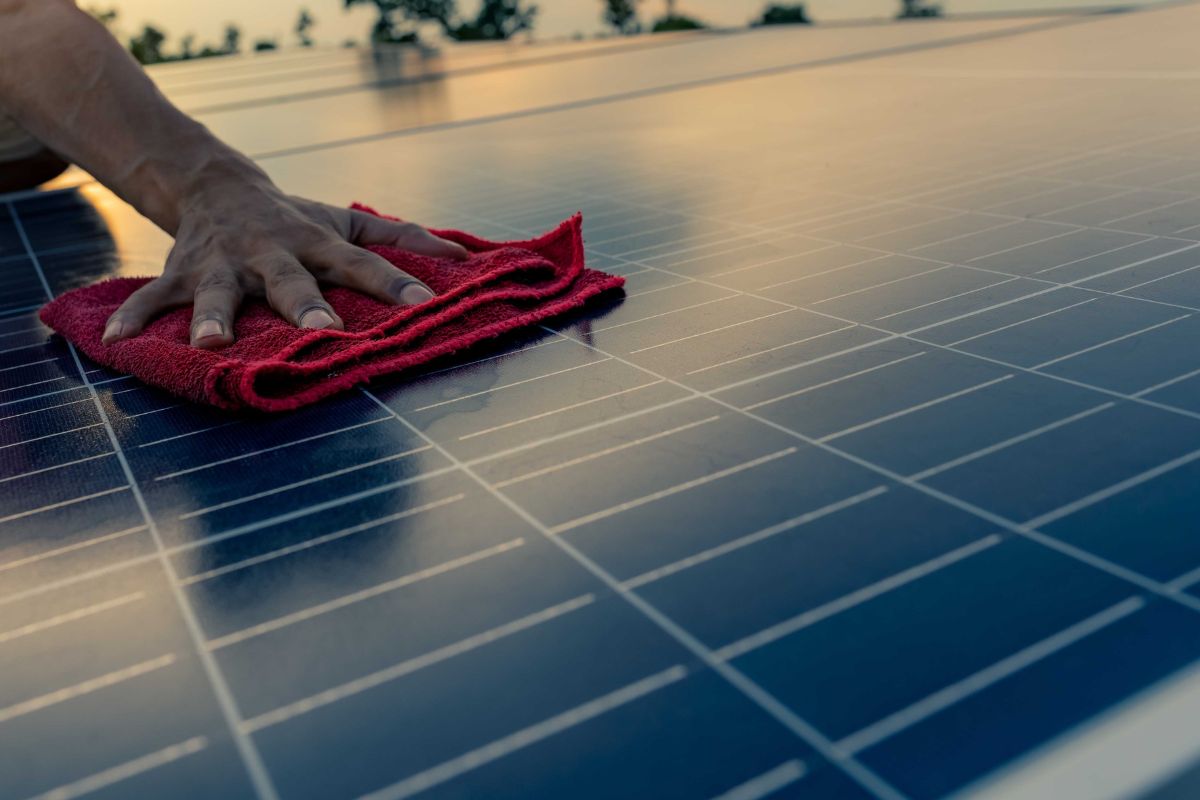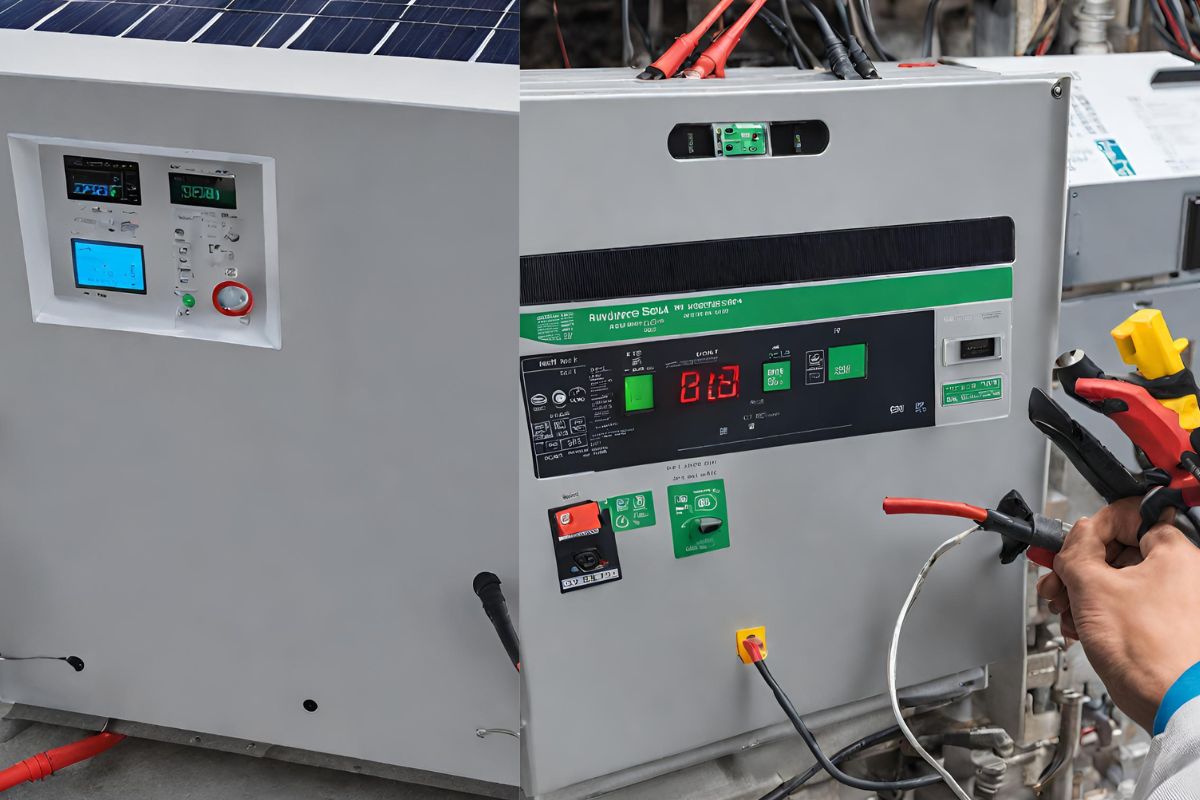Do you want to know about off-grid vs grid-tied solar inverters? Two different solar inverters help distribute electrical grids in different ways.
While the Off-grid inverters collect energy from the sun and convert direct current into alternating current
The off-grid inverters also get power from the sun and convert it from DC to AC, but it goes further to synchronize with the electrical grid.
That is not all. Continue to read, and you will find out this solar inverter’s primary purpose and work.
Let’s get started.
Off-grid solar Inverters vs. Grid-Tied Inverters
It is getting bigger day by day in the world of solar energy, But the challenge is knowing how to choose the right inverter to optimize the system performance.
Considering the two main inverters. Off-Grid and Grid-tied solar inverters, the Hybrid inverter is another type of solar inverter..
But let us talk about the grid-tied and off-grid inverters in this article.
Knowing Off-Grid Inverters
Off-grid inverters are smart, easy-to-carry types of solar inverters, and they are often used in remote places, like in cabins, camping trailers, camps, and even in off-grid homes.
They are battery-based inverters; they provide a reliable power source; one intriguing aspect is their ability to operate without solar panels, although in most cases, it will involve a combination of batteries, solar panels, and even generators.
Off-grid inverters provide a robust solution for disconnected areas, ensuring continuous power supply with the right battery setup.
They work simply by collecting their energy from the base as a DC and converting it into a usable AC.
Which is stored in a battery for power backup, especially in an area without access to the electrical grid.
Knowing On-Grid Inverters
On-grid (Grid-tied) inverters play a different role— they are basically designed to sell electricity back to the power company for financial benefits.
That, first of all, is the big difference between the grid solar inverter vs. the grid solar inverter.
They also convert the DC to AC and synchronize with the electrical grid, which allows the excess energy to be given back into the grid, often as earning compensation through feed-in tariffs.
If you want to offset your electric bill or contribute on a larger scale by distributing electricity to the grid, grid-tied inverters are the best way to go.
Note: An internet connection and a grid connection are prerequisites to activate these inverters.
And also, you can not add a battery to the grid-tied solar inverter.
5 Key Differences Between Off-Grid And Grid-Tied Solar Inverters
This will surely help you get a clearer picture of both inverters and help you decide better.
1. Dependency on utility power
This is one of the big differences between solar inverter systems. The grid-tied solar inverter relies on the utility grid for continuous power supply.
If the grid goes down, the system will not be able to produce current for the home unless a backup storage solution, like batteries or a generator, is incorporated.
While the staff said solar can operate independently without the utility grid, this is while it is a self-sufficient power source.
Off-grid systems continue to provide electricity even during grid outages. However, they get to their own site energy storage.
2. Connection to the grid
The grid-tied solar inverter is connected to the utility grid, allowing people to send the excess current back to the grid when their solar panels produce more than they consume.
This grid connection serves as a form of storage.
But in contrast with the off-grid solar inverter, as I have said before, they are used mostly in remote areas where connecting to the grid is either too expensive or impractical.
On their side, they operate independently of the utility grid and rely on on-site storage solutions.
3. Energy storage
On the ground of energy storage, the on-grid (Grid-Tied) solar inverter is not a primary concern because excess electricity is fed back to the grid.
No dedicated on-site storage, such as batteries, is required for day-to-day operation.
Whereas for the off-grid solar inverter, energy storage is a critical aspect of concern.
This is because it requires battery packs to store enough energy that is generated during the day for use during periods when solar panels are not producing current, such as at night.
This, again, is among the differences between both solar inverters. Let us continue to the third difference.
4. Cost Implications
Generally, grid-tied solar systems are more cost-effective initially since they don’t require extensive energy storage solutions.
People can leverage the grid for energy storage without the need for additional batteries.
As the case may be, the expenses on batteries and other storage solutions are the reason the cost of off-grid systems is much higher.
And again, the need for sufficient storage capacity for nighttime or cloudy days is some other money that is upfront.
5. Applicability
On-grid solar is a great choice for people living in urban or suburban areas where grid connections are reliable and much more cost-effective.
It is the technical choice for people who want to offset their electricity costs without dealing with the complexities of off-grid setups.
While off-grid solar is better for remote and rural locations where the grid connection is impractical or expensive, off-grid systems are suitable for those seeking complete energy independence, even in areas without access to utility services.
So, whether you’re looking towards the off-grid or on-grid utility wave, there’s a solar inverter solution for everyone.
Can Off-Grid Solar Inverters Be Converted To Grid-Tied Inverters?
Yes you can, but there is more to it. With recent research, I found out it is possible, you can convert an off-grid solar inverter to a grid-tied one. However, it is a bit technical. Let’s see how realistic it is.
The setup uses a pure sine wave inverter with a 48-volt input, a step-up DC converter, and e-bike batteries as a backup. The tech will increase the input voltage to the inverter using the step-up converter.
Here are the steps:
Step 1: The 48-Volt Pure Sine Wave Inverter
This 48-volt pure sine wave inverter became our bridge, connecting the dots between Off-Grid cool and the grid-tied.
Step 2: Setup DC converter, turning our solar setup into a dynamic, dual-dancing sensation.
Step 3: Temporary Grid-Tie
Once champions of self-sufficiency, solar panels now gracefully feed enough energy back to the grid through a temporary tie-in.
Step 4: Off-Grid
The magic lies in adaptability. The grid acting up? No worries – our Off-Grid spirit takes the stage, ensuring a continuous power flow through those e-bike batteries.
So, there you have it – a solar transformation. But do not try it by yourself; this is a piece of advice.
How To Wire Off-Grid And Grid-Tied Solar Inverters
Get ready to gain the skills needed for your solar energy setup.
Wiring Off-Grid Solar Inverter:
Before we go into the installation, you get to understand your system component for an easy flow setup.
The main things that you need for the setup are solar panels, charge controllers, batteries, and inverters.
Setting Up the Basic Battery-Integrated System:
- Connect solar panels in parallel within a combiner box.
- Get a 30 amp PWM charge controller, which is used to regulate energy that is coming from solar panels.
- At this point, you have to connect the charge controller to a 12-volt lead-acid battery.
- We use a 30 amp breaker for overcurrent protection on the positive line.
- Connect a small 12-volt DC motor using a 30 amp breaker to the charge controller.
- Wire the system by connecting a negative black cable and a positive red cable between the charge controller and the battery.
Connecting the Inverter:
- Integrate a 1500-watt pure sine wave inverter into the system.
- Now, you must connect the positive red cable from the inverter to the positive battery pot.
- While you connect the negative black cable from the inverter to the negative battery pot.
- Install a 200 amp class T fuse close to the positive battery post for overcurrent protection.
Additional Steps (if required):
Configure system settings on the charge controller, including battery chemistry and voltage cutoff.
You are done. Meanwhile, this is good for those with technical knowledge, no how.
Wiring Grid-Tied Solar Inverter
Let’s use the 3000-watt Grid-Tied Inverter:
Understand the features of a grid-tied inverter designed for DC power optimizers.
Note the integrated DC safety switch and considerations for exterior installations.
AC and DC Connections:
- Connect the inverter to the main distribution panel using a 4×10 AWG wire.
- Strip away 5/16 inches of insulation from the wires.
- Join the green ground wire to the grounding bus bar.
- Connect the hot black conductor to the L1 terminal on the AC1 terminal block.
- Thirdly, you now connect the hot red conductor to the L2 terminal on the AC1 terminal block.
- Fort connects the neutral or white conductor to the neutral terminal on the AC1 terminal block.
- Finally, connect the positive and negative solar wires to the corresponding DC terminals on the inverter.
Additional Steps and Activation:
Run a CAT5 or ethernet cable from the RJ45 terminal block for remote monitoring (if needed).
Follow the manufacturer’s activation procedures for the inverter.
Note: Always follow safety guidelines, local codes, and manufacturer recommendations during installation.
Final Thought
Now that you have learned about the off-grid solar inverter vs. grid solar inverter, let me again remind you of their major differences.
An off-grid inverter functions autonomously, extracting energy from batteries and converting it from direct current (DC) to alternating current (AC) for practical use.
Although it is not directly linked to the power grid, it can form a hybrid system by integrating with a grid-tied inverter, providing a complete electrical supply.
Conversely, grid-tied inverters enhance the power supply of your residence by establishing a connection with the primary electrical grid.
They effectively oversee the utilization of solar energy, providing electricity to your devices when it is accessible and smoothly switching to grid power when necessary.
Others Readings:



